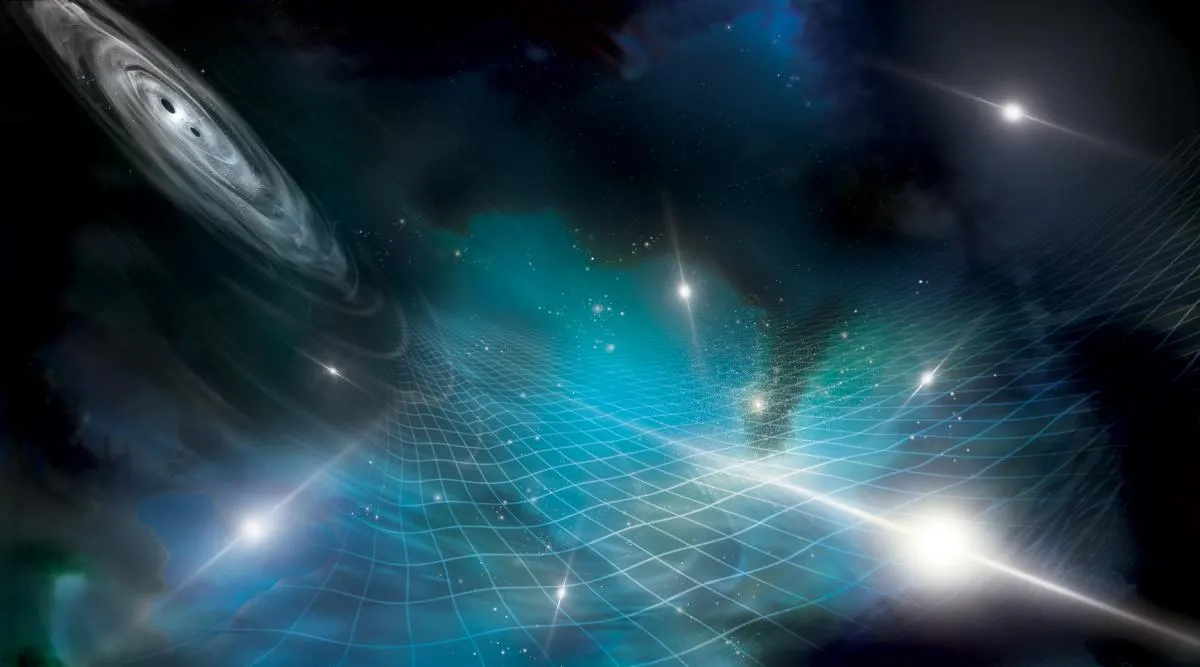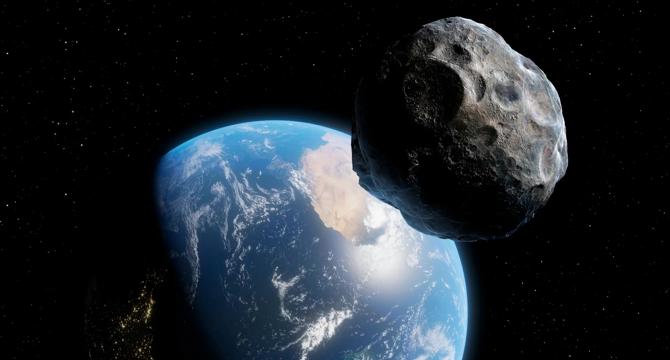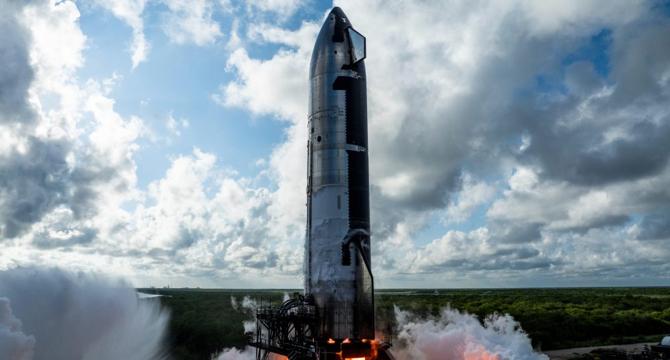Space News
Spaceflightnow
111

Vast to complete Haven-1 primary structure in July 2025, ahead of target May 2026 launch date
- Vast is set to finish the Haven-1 space station primary structure by July 2025, ahead of the May 2026 launch date.
- The company aims to be the first commercial space station in history and has completed its primary structure and qualification article.
- Vast's CEO, Max Haot, mentioned progress in manufacturing the flight version at the 40th Space Symposium.
- NASA supports multiple commercial space station partners, including Vast, through an SAA to advance station modules.
- Vast's roadmap includes milestones from 2023 leading to the Haven-2 space station by 2028, aiming to succeed the ISS.
- Vast confirmed completion of key milestones such as Oxygen Pressurization Demonstration and Large Window Pressure Test.
- The company aims to test and complete the environmental campaign at NASA's Glenn Research Center early 2026.
- Vast plans to name the crew for Haven-1 soon and emphasizes a focus on science rather than tourism for crew members.
- Haven-1's design includes a comfortable, functional layout with nods to Apple's design philosophy for a space laboratory feel.
- Vast aligns with SpaceX for docking technology and partnerships with companies like Redwire Space and Yuri for space equipment.
Read Full Article
6 Likes
Nasa
275

Image Credit: Nasa
NASA Expands Youth Engagement With New Scouting America Agreement
- NASA and the Sam Houston Area Council (SHAC) of Scouting America signed a Space Act Agreement to expand youth access to NASA's educational outreach programs and opportunities.
- The agreement aims to enrich scout activities with NASA's programs, engage youth with the agency's mission, and provide opportunities for future explorers and scientists.
- Collaboration has led to a new space-focused summer experience at Camp Strake, including STEM activities, tours of Johnson Space Center, workshops, and insights into NASA's projects.
- The partnership between NASA OSTEM and Scouting America aims to inspire interest in STEM careers among youth and connect students to NASA's mission and workforce.
Read Full Article
16 Likes
Brighter Side of News
173

Image Credit: Brighter Side of News
New unified gravity theory could finally bridge Einstein and quantum physics
- Researchers have proposed a new theory to unite gravity with the Standard Model, aiming to bridge the gap between Einstein's theory of general relativity and quantum physics.
- The new theory, developed by physicists from Aalto University, suggests that gravity can be described by a gauge theory, similar to the other forces of nature, offering a pathway towards a 'Theory of Everything.'
- Gravity's resistance to unification stems from the clash between the symmetries of quantum fields in the Standard Model and the curved space-time described by general relativity.
- Alternative theories like string theory and loop quantum gravity have attempted to explain gravity within a quantum framework, but none have fully aligned with the Standard Model due to the challenge of renormalizability.
- The new theory, called unified gravity, uses an eight-spinor representation of quantum fields and introduces a space-time dimension field to describe gravity using finite-dimensional symmetries similar to those in the Standard Model.
- Unified gravity's Feynman rules imply renormalizability to all orders, a crucial feature not achieved by previous quantum gravity theories, suggesting a potential breakthrough in understanding the interactions between gravity and quantum mechanics.
- The theory not only provides a mathematical solution but also offers insights into the behavior of matter and antimatter in the early universe and extreme environments like black holes and the Big Bang.
- Unified gravity's compatibility with the symmetries of the Standard Model allows for a unified mathematical framework to describe both particle physics and gravity, potentially leading to a deeper understanding of the universe.
- Despite departing from general relativity, unified gravity is able to reproduce known results and remains consistent with current observations, including gravitational wave measurements and black hole imaging.
- While still a work in progress, researchers are optimistic about the potential of unified gravity to revolutionize physics and invite further testing and refinement from the scientific community.
- The theory presents a new paradigm in understanding the fundamental forces of nature and may lead to groundbreaking advancements akin to those prompted by Einstein's theory of gravity a century ago.
Read Full Article
10 Likes
Design-Milk
324

Image Credit: Design-Milk
The PolarisGo Limited-Edition Chair Is Out of This World
- The limited-edition PolarisGo Chair, inspired by the iconic Go Chair by Ross Lovegrove for Bernhardt Design, incorporates cutting-edge injected magnesium technology and data from the 2024 Polaris Dawn mission.
- Half of the proceeds from the PolarisGo Chair project will be donated to St. Jude’s Children’s Research Hospital, blending science, art, and philanthropy in a unique way.
- The original Go Chair was known for its revolutionary use of injected magnesium core, aerodynamic design, lightweight structure, and futuristic appearance, making it a significant piece recognized by museums and featured in Science Fiction films.
- The new limited-edition version of the Go Chair, designed by Lovegrove in partnership with CreativeWorkStudios, features an aerospace-grade aluminum alloy seat insert inspired by shockwave data recorded from a rocket launch, embodying a blend of cosmic and corporeal values.
Read Full Article
19 Likes
Discover more
Metro
373

Image Credit: Metro
Soviet satellite could be hours away from crashing back on Earth after 53 years
- The Soviet satellite Kosmos 482 Descent Craft could crash back down to Earth after more than 50 years in space, potentially between May 8 and 12.
- The potential area for the crash landing is vast, spanning from 52° north to 52° south, covering Africa, South America, Asia, Australia, Europe, and North America.
- There are around 35,000 tracked space debris pieces larger than 10cm, with about 10,000 active satellites in orbit, leading to occasional satellite crashes back on Earth.
- Experts predict the risks of the Kosmos 482 crash not to be high but not zero, comparing the potential impact to that of a meteorite, with an estimated impact speed of 65-70 meters per second.
Read Full Article
22 Likes
Digitaltrends
337

Image Credit: Digitaltrends
Japan’s ispace moon lander enters lunar orbit ahead of landing attempt
- Japanese company ispace's Resilience lander has successfully entered lunar orbit in preparation for a landing attempt next month.
- This is ispace's second lunar landing attempt, after the first lander crashed due to a calculation error in April 2023.
- The current mission includes science experiments and technology tests on board, along with a micro rover named Tenacious to explore the landing site.
- The lander aims to touch down in the Mare Frigoris region but may switch to a backup landing location if needed, with the landing attempt scheduled for June 5.
Read Full Article
20 Likes
Mensjournal
133

Supercomputer Names Exact Year Life on Earth Will End
- A supercomputer has predicted that survival on Earth will be impossible in about 1 billion years when conditions become too extreme for life as we know it.
- Scientists with NASA and Japan's Toho University used the computer to determine that the sun will end life on Earth around the year 1,000,002,021 due to its expansion and increased output that will heat the planet beyond the threshold of life.
- Research from 2021 by Kazumi Ozaki and Christopher T. Reinhard explained that Earth eventually won't have enough oxygen to sustain life, highlighting the importance for the search for life on Earth-like planets beyond our Solar System.
- The study of Earth's eventual demise has been ongoing, with researchers considering the implications of the planet's changing atmospheric conditions for the future.
Read Full Article
8 Likes
Nasa
399

NASA Selects Winners of the 2024-2025 Power to Explore Challenge
- NASA has selected three winners out of nine finalists in the Power to Explore Challenge, a writing competition for K-12 students.
- The winners, ranging from ages 10 to 17, were chosen based on their essays about NASA's radioisotope power systems and unique exploration missions to moons.
- The students will visit NASA's Glenn Research Center in Cleveland for a VIP tour as part of their prizes.
- The challenge received over 2,000 entries from students across the United States, with finalists engaging in discussions with NASA scientists and engineers.
Read Full Article
24 Likes
Earthsky
346

Image Credit: Earthsky
Is a mammoth black hole lurking in this nearby galaxy?
- The James Webb Space Telescope has found new evidence of a supermassive black hole in the heart of the spiral galaxy Messier 83, known as the Southern Pinwheel galaxy.
- Astronomers had suspected the presence of a supermassive black hole in Messier 83, and now, with the detection of highly ionized gas, it seems more likely.
- The James Webb Space Telescope detected highly ionized neon emissions in the nucleus of Messier 83, indicating the presence of an active galactic nucleus - a supermassive black hole.
- The recent findings were published in The Astrophysical Journal on April 17, 2025, by an international team of astronomers.
- Webb's Mid-InfraRed Instrument (MIRI) helped uncover the hidden supermassive black hole by peering through the thick dust in the galaxy.
- The discovery challenges past assumptions and opens new avenues for exploration in understanding galaxies and their supermassive black holes.
- The presence of highly ionized gas near the galactic center of Messier 83 suggests the likely existence of a supermassive black hole rather than stellar processes creating it.
- Astronomers are excited by this discovery as it reveals new insights into the universe and showcases the capabilities of the James Webb Space Telescope.
- The finding of a supermassive black hole in Messier 83 provides compelling evidence challenging previous assumptions and revolutionizes astronomers' understanding of galaxies.
- NASA's Webb space telescope has provided tantalizing new clues suggesting the presence of a supermassive black hole in the nearby galaxy Messier 83.
Read Full Article
20 Likes
Livescience
106

Image Credit: Livescience
A whole 'population' of minimoons may be lurking near Earth, researchers say
- New research suggests that 2024 PT5, a minimoon discovered last year, may have been blown off the moon during a giant impact, hinting at a hidden population of lunar fragments near Earth.
- The discovery of 2024 PT5 indicates the presence of a population of moon rocks traveling near Earth's orbit, not just an outlier.
- Astronomers identified 2024 PT5 in August 2024, as it moved slowly near Earth, making it a prime target for the Mission Accessible Near-Earth Object Survey.
- The composition of 2024 PT5 resembles rocks brought back to Earth by the Apollo program and Luna 24, indicating its lunar origin.
- Studying 2024 PT5's composition could help identify its parent crater and shed light on planetary impact events.
- 2024 PT5 briefly entered Earth's path but changed lanes, moving back toward the sun before potentially intersecting with Earth again in 2055.
- Another mini-moon, Kamo'oalewa, was discovered in 2021, suggesting a potential population of lunar fragments near Earth.
- Researchers are trying to match Kamo'oalewa to a specific crater, potentially linking it to the Giordano Bruno crater on the far side of the moon.
- The discovery of multiple lunar fragments near Earth raises the possibility of misclassified asteroids that could impact our understanding of NEO orbits.
- Ongoing research, including with the MANOS survey and upcoming observatories like the Vera Rubin Observatory, aims to identify more lunar fragments and expand our knowledge of these objects.
Read Full Article
6 Likes
Knowridge
195

Image Credit: Knowridge
Astronomers crack the code of massive star formation
- Astronomers have deciphered the process of massive star formation using the VLA radio telescope.
- Observations of the young star HW2 in Cepheus A showcased gas flow patterns fueling its growth.
- The study reveals a dense ring of hot ammonia gas forming an accretion disk, feeding gas to the growing star.
- These findings validate theories of massive star formation and shed light on the mechanisms behind the birth of influential cosmic giants.
Read Full Article
11 Likes
Guardian
266
Image Credit: Guardian
Trump administration to stop US research on space pollution, in boon to Elon Musk
- The Trump administration is planning to end federal research on pollution from satellites and rockets, including those linked to Elon Musk's companies, potentially creating a conflict of interest.
- The pollution is accumulating in the stratosphere, raising concerns about potential harm to the ozone layer and the climate during the ongoing climate crisis.
- Research projects related to space pollution could have led to new regulations affecting Musk's companies and the commercial space industry.
- Critics suggest political motivation behind the move as it aligns with Musk's business interests.
- Starlink's satellites provide internet services, but they contribute to space pollution along with other mega constellations.
- Spacecraft emissions and metals released into the stratosphere pose risks of climate destabilization.
- Lack of understanding and oversight on the consequences of spacecraft pollution raises concerns among experts.
- Launch emissions from rockets are significantly potent in heating the atmosphere, impacting the ozone layer.
- The cancellation of research projects could benefit Musk's commercial interests while hindering progress in understanding and regulating space pollution.
- Limited efforts are being made to address the vacuum in stratospheric measurement research, with uncertainties on mitigating spacecraft emissions.
Read Full Article
16 Likes
Teslarati
328

Image Credit: Teslarati
SpaceX secures FAA approval for 25 annual Starship launches
- SpaceX has obtained FAA approval for 25 annual Starship launches from its Starbase spaceport in Texas.
- The FAA approval is a crucial step towards SpaceX's ambitious space exploration goals.
- The final environmental assessment concluded that SpaceX's expanded launch plans would not significantly impact the surrounding environment.
- While SpaceX's momentum grows with the FAA approval, concerns remain among environmentalists regarding potential environmental and community impacts.
Read Full Article
19 Likes
Pv-Magazine
93

Novel smart coating for space solar cells
- Researchers in China have developed a transparent smart radiation device (TSRD) to protect space solar cells from extreme thermal fluctuations.
- The TSRD uses a thermochromic material, vanadium dioxide (VO2), which changes its heat-releasing properties based on temperature.
- The optimized coating structure achieved high transmission in both visible and infrared spectrums and showed promising solar absorption and emission modulation capabilities.
- The research team plans to conduct further tests under extreme conditions to assess the durability and performance of the TSRD for practical use in spacecraft thermal management systems.
Read Full Article
5 Likes
For uninterrupted reading, download the app